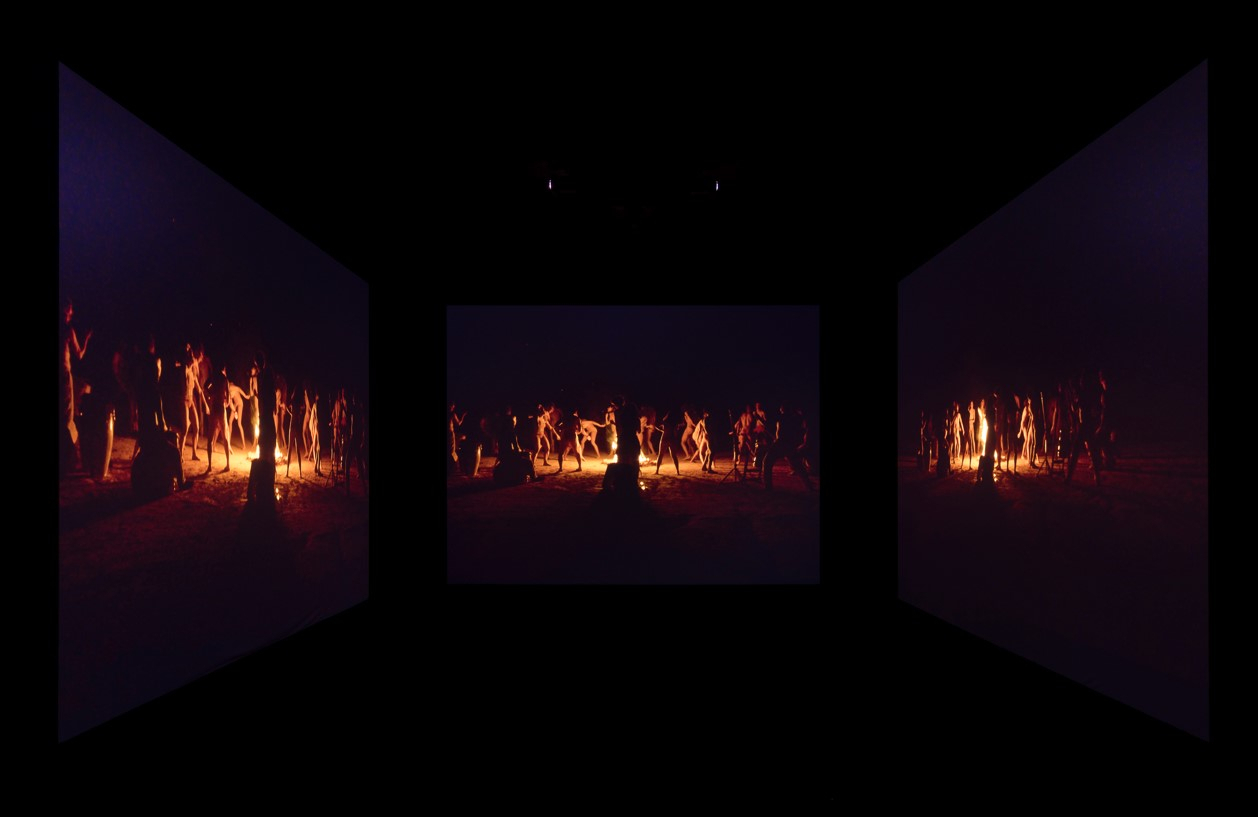
As the sun sets, a group of dancers and percussionists in the Maghreb region in Africa perform around a fire, the dance getting more fierce as the percussion rhythms grow faster and faster. The 10-minute film depicting the scene is played on six screens in a dark room.
Viewers will be captivated by the performance, feeling as though they are standing among the dancers. When the camera moves closer to the fire, the whole room seems as though it is on fire. The dancing goes on until the sun rises.
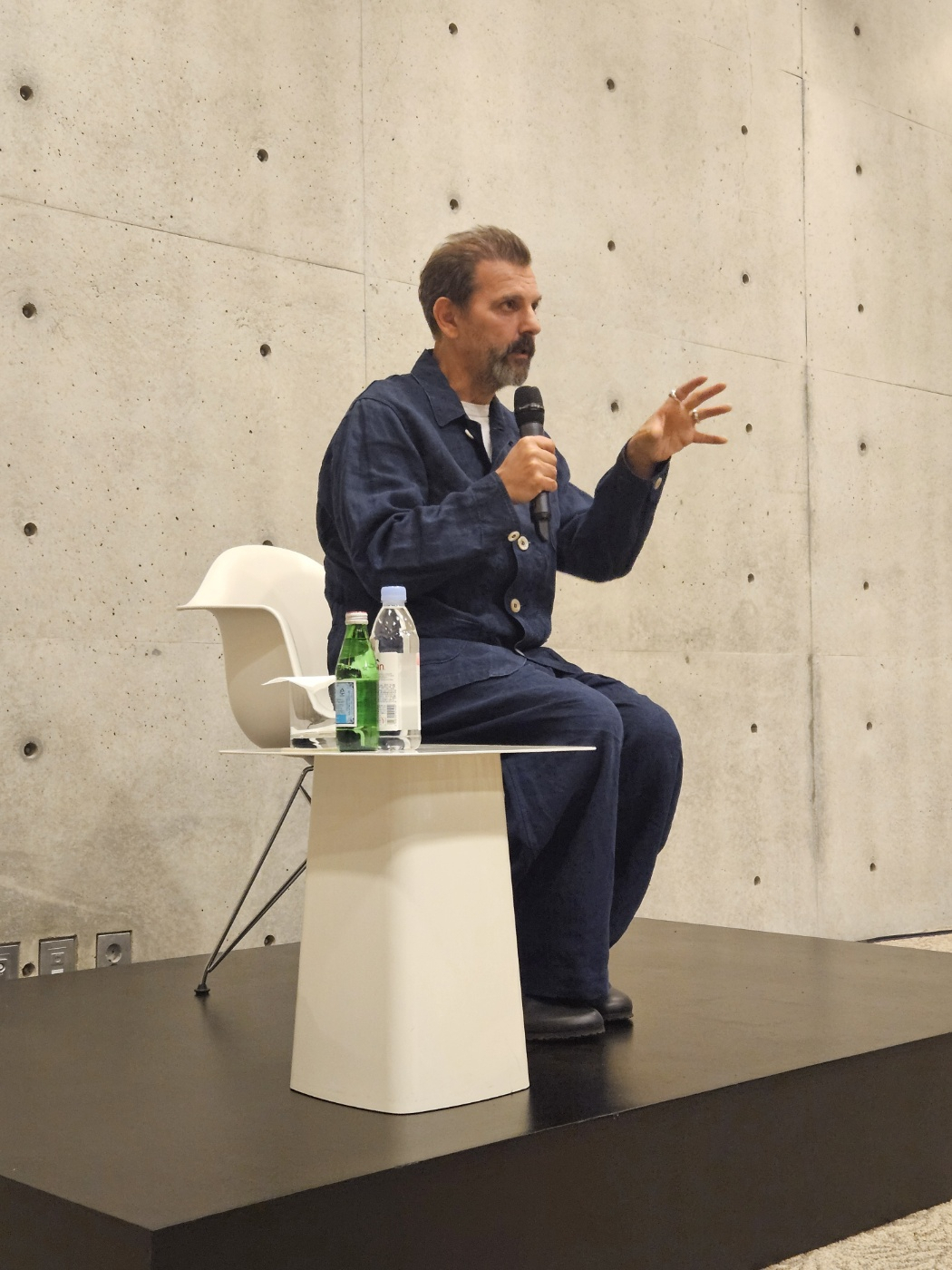
The film, “Burn to Shine,” created by Swiss-born artist Ugo Rondinone in collaboration with Franco-Moroccan choreographer Fouad Boussouf, is being shown at Museum San in Gangwon Province.
An internationally acclaimed contemporary artist, Rondinone’s largest solo exhibition in South Korea kicked off on Saturday at Museum San, showing some 40 works created over 30 years.
“I made this film during the pandemic. There is an old Buddhist saying: ‘You have to burn to shine,’” the artist said at a press conference at the museum on Monday. “I wanted to show the cycle of life. It starts with the sunset and finishes with the sunrise, and it starts again. That cycle of life -- you are going to see (it) through the whole exhibition.”
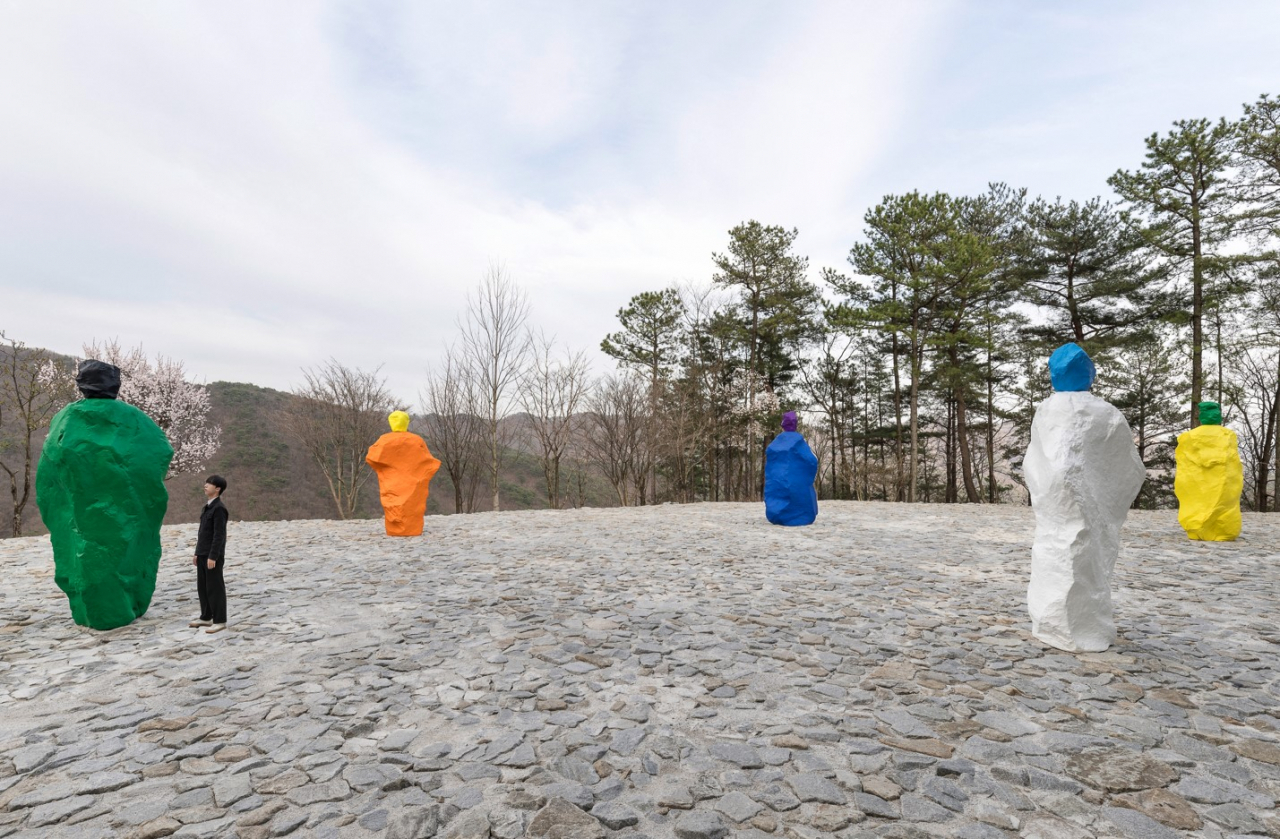
Outside the museum are the 3-meter-tall “Nuns+Monks” sculptures, widely known as Rondinone’s signature statues. They were created based on small pieces of limestone, which were scanned and duplicated on a larger scale using a 3D scanner. The sculptures are cast in bronze and covered in fluorescent paint. The monks and nuns face the mountains that surround the museum.
“The monk is not specifically dedicated to a specific religion. It is just a symbol of a meditated person,” he said. “The main theme is humans' relation to nature and to see how we are embedded in nature.”
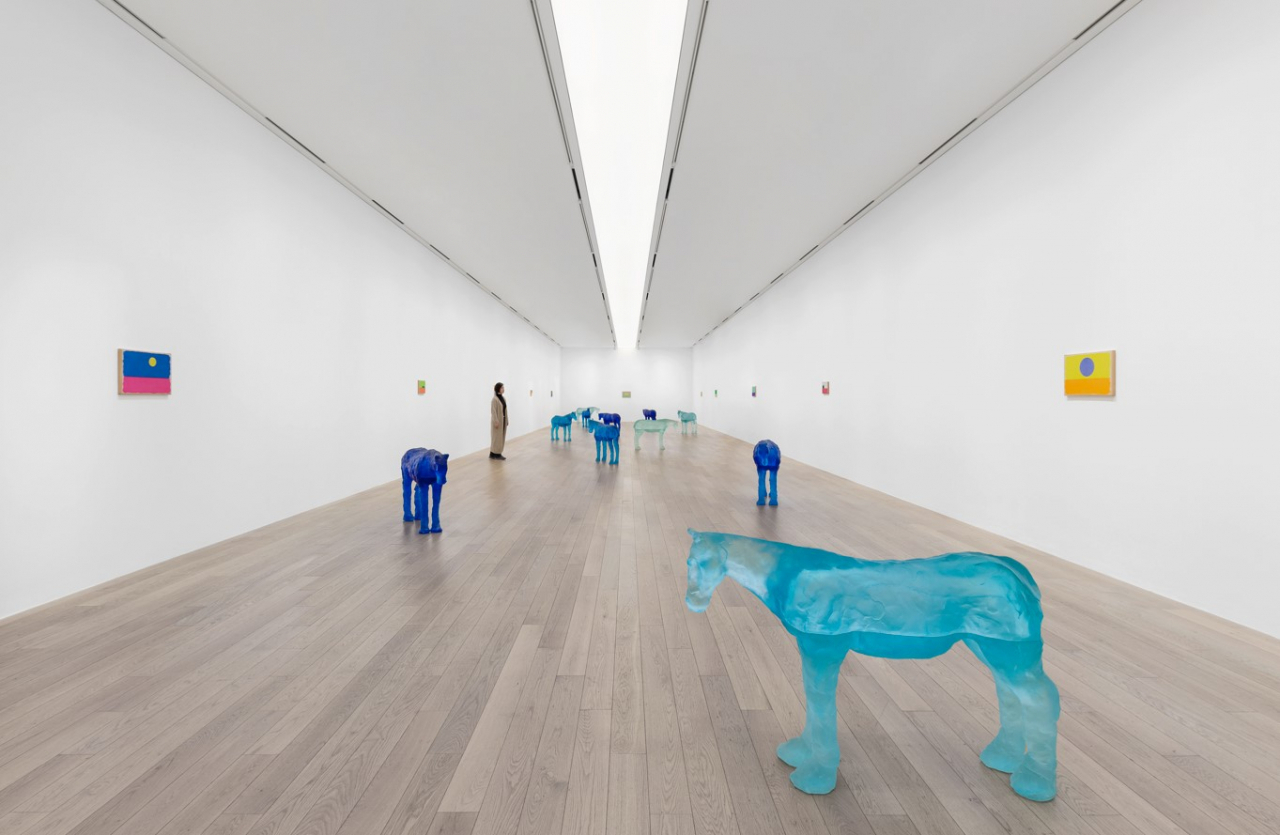
Another room is dedicated to the glass sculpture series “Horses” and “Mattituck,” a series of watercolor paintings that depict the views of sunset and sunrise seen from the artist's studio on the Long Island Sound in the US. Each horse, named after one of the world’s oceans, is made of glass and has a horizontal line that runs across the sculpture, dividing up the legs and body of the horse.
“The cut gives you an illusion -- when the light shines through, that the lower part is darker than the upper part. That gives you the illusion of air and water. The whole process was done through fire, so you have all the four elements (earth, fire, water and air) that constitute life within the horse,” Rondinone said.
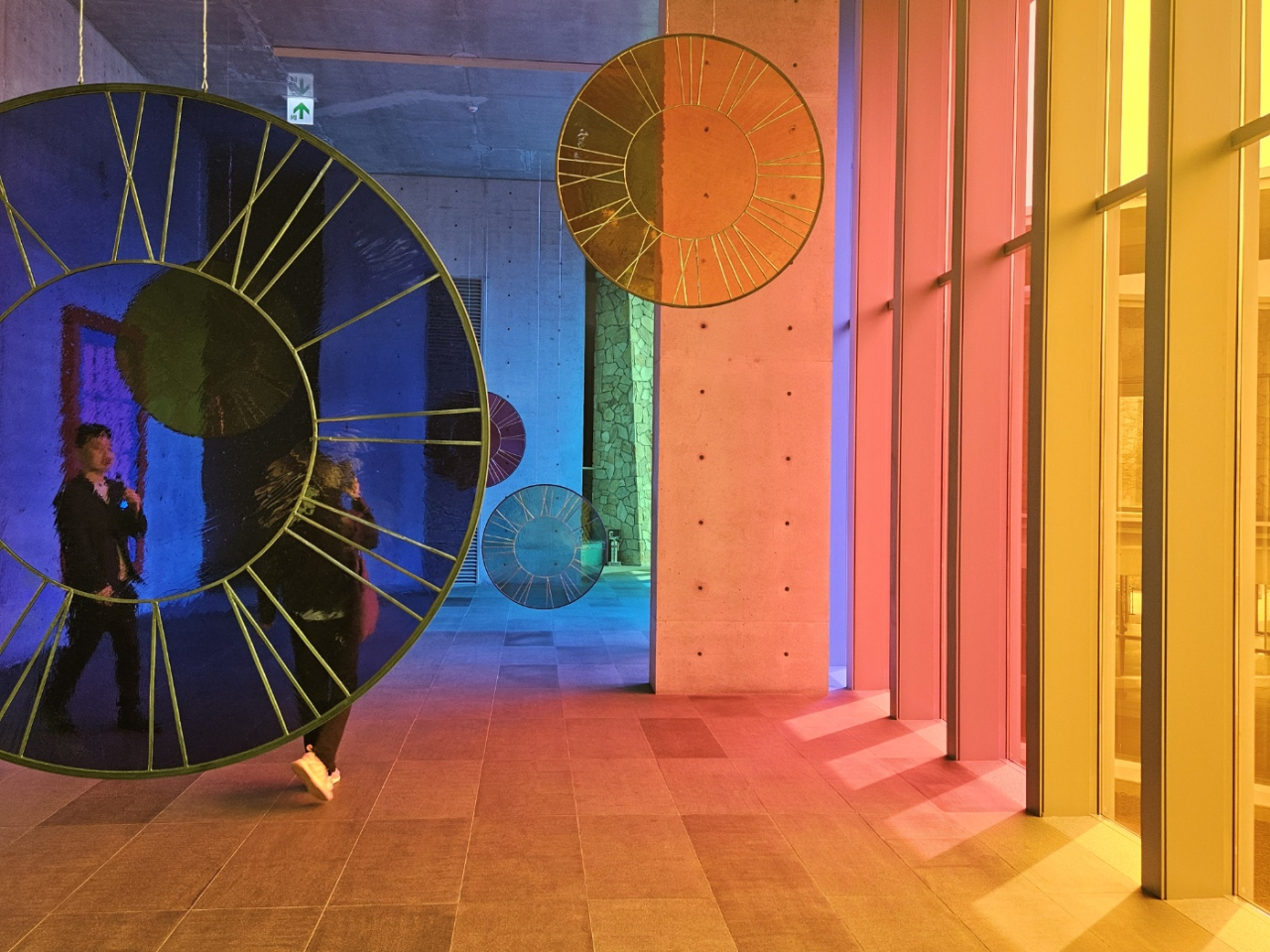
Navigating through the exhibition, visitors encounter a rainbow, as light reflects through rainbow-colored windows. Clocks without hands hang from the ceiling. On the wall facing the colorful windows is another series of windows, each created with glass panels and acrylic on wood.
“The clock is activated just by light and the windows (created out of glass panels and acrylic on wood) do not look out to anything -- (they) just reflect you back. The starting point is the meditation about time and yourself,” he said.
The exhibition includes works created in collaboration with children from Wonju in Gangwon Province. Titled “Your Age and My Age and the Age of the Sun” and “Your Age and My Age and the Age of the Moon,” each work consists of 1,000 drawings of the sun or moon created by children aged 3 to 12.
The exhibition was shown at the Petit Palais in Paris in 2022 and traveled to Fosun in Shanghai, before arriving in Museum San. The exhibition runs through Sept.18.


![[KH Explains] No more 'Michael' at Kakao Games](http://res.heraldm.com/phpwas/restmb_idxmake.php?idx=645&simg=/content/image/2024/04/28/20240428050183_0.jpg&u=20240428180321)


